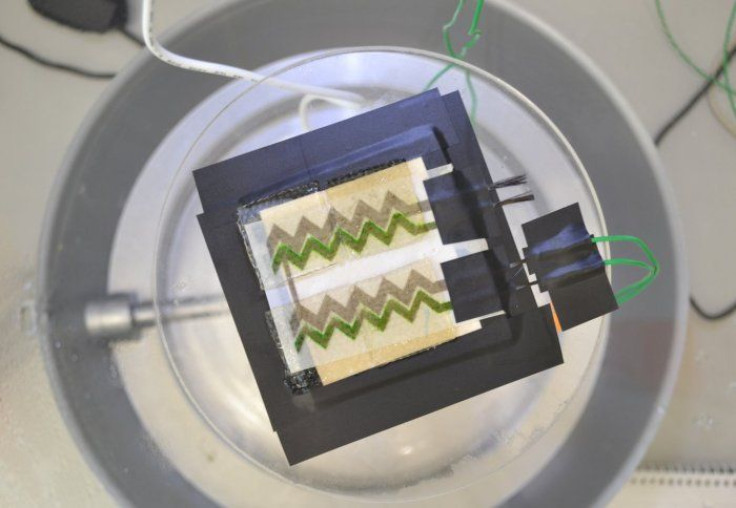Bacteria-Powered Batteries: Printable Solar Cell Using Cyanobacteria, Carbon Nanotubes Created

Scientists from the Imperial College of London have successfully used cyanobacteria — bacteria that can turn light energy into electricity — to print circuits that can serve as solar cells by using just a simple inkjet printer.
By using the bacteria, they have overcome the primary issue with conventional solar cells, which need constant sunlight to generate electricity.
The solar cells printed using cyanobacteria can generate electric current both in dark and light.
Cyanobacteria are micro-organisms that make food through photosynthesis. They use sunlight to create energy for survival, and which can be harnessed. They have been on Earth for billions of years and are thought to be the primary reason why the Earth’s atmosphere is oxygen rich.
The researchers from Imperial College London, the University of Cambridge and Central Saint Martins designed this as an environment friendly power supply for low-power biosensors, which can even be scaled up to print a bioenergy wallpaper.
"Our biophotovoltaic device is biodegradable and in the future could serve as a disposable solar panel and battery that can decompose in our composts or gardens," said co-author Marin Sawa from the Department of Chemical Engineering at Imperial College London, in a press release on their website.
"Cheap, accessible, environmentally friendly, biodegradable batteries without any heavy metals and plastics - this is what we and our environment really need but dont have just yet, and our work has shown that it is possible to have that," Sawa added.
Biophotovoltaic cells contain some a type of cyanobacteria or algae that is phototrophic. This property allows them to convert light into energy.
Currently one of the biggest challenges facing biophotovoltaic cells is producing them on a large scale. They are expensive and also labor intensive, which hinders its widespread use. The team has overcome this by using just a common inkjet printer, found in most homes and offices, to create this cell, on paper. Current solar cells have a low power output, and a short lifespan which can also be countered by improving ease of production.
The process involves embedding the cyanobacteria onto an electrode surface from a bulky liquid reservoir. The team has developed a cyanobacteria ink that can be printed onto electrically conductive carbon nanotube (which can also be printed onto paper).
According to the study, the team could keep the cyanobacteria alive through the printing process and they were still able to perform photosynthesis so that small amounts of electrical energy could be harvested over a period of 100 hours.
“A bio-solar panel made in this way, the approximate size of an iPad, could power a simple digital clock, and in separate experiments, a small LED light bulb,” the report said.
Researchers showed that nine connected cells can power a digital clock or generate flashes of light from an LED, illustrating the ability to produce short bursts of relatively high power.
The team used the experiment to study the power output and found that they could generate continuous power over a 100-hour-period but with distinct light and dark cycles.
The study was published in the journal Nature Communications.
© Copyright IBTimes 2024. All rights reserved.











